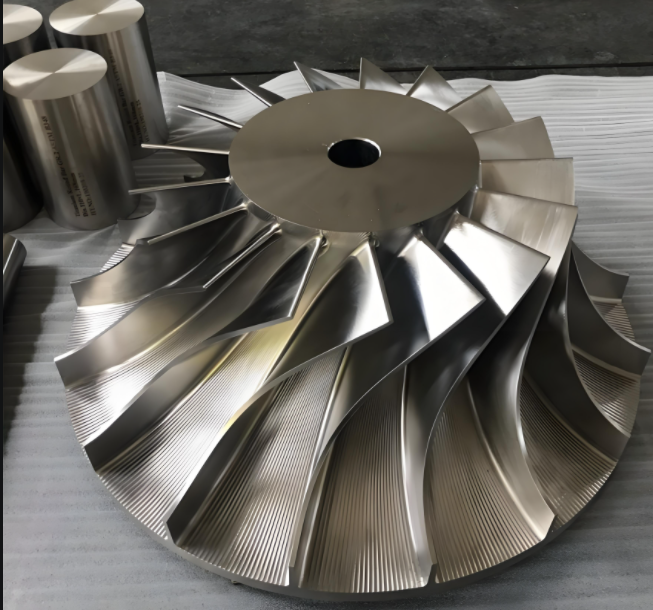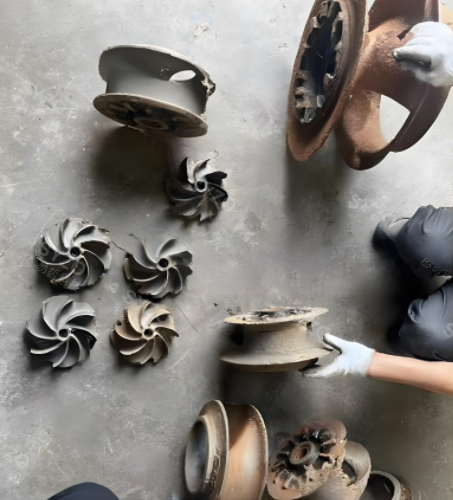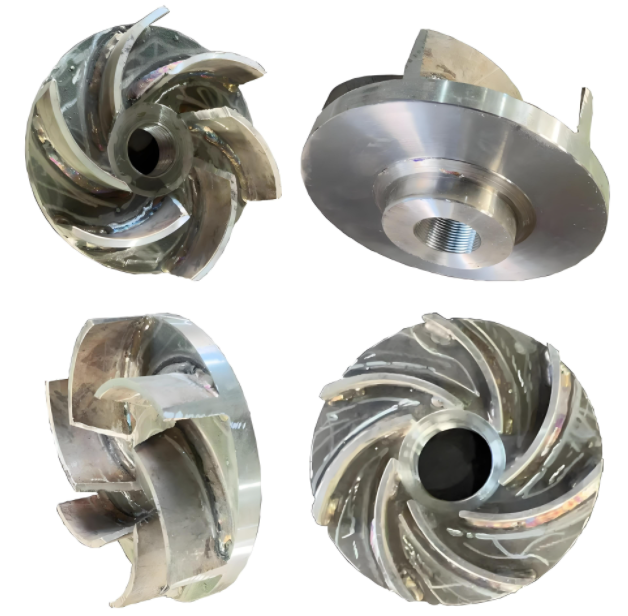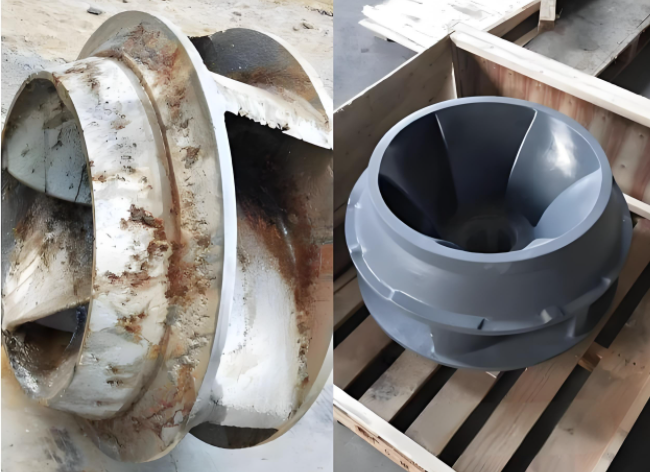Corrosion resistance is critical for machined impellers used in industries such as marine, chemical processing, and power generation, where they are exposed to aggressive environments like high humidity, saline conditions, and elevated temperatures. Enhancing corrosion resistance extends impeller service life, reduces maintenance costs, and ensures operational reliability. This guide details methods to improve corrosion resistance through material selection, surface treatments, protective coatings, and environmental controls, supported by specific technical parameters and practical considerations. The approach is systematic, focusing on proven techniques and their implementation.
Material Selection for Corrosion Resistance
The choice of material significantly influences an impeller’s ability to resist corrosion. Materials must balance corrosion resistance with mechanical properties like strength, toughness, and fatigue resistance, tailored to the operational environment.
Stainless Steels
Stainless steels are widely used for impellers due to their corrosion-resistant properties. Martensitic stainless steels, such as AISI 410 (11.5-13.5% chromium) and AISI 420, provide good hardness (up to 500 HV) and moderate corrosion resistance, suitable for mildly corrosive environments. Austenitic stainless steels, like AISI 316, contain 16-18% chromium, 10-14% nickel, and 2-3% molybdenum, offering superior resistance to pitting and crevice corrosion. The pitting resistance equivalent number (PREN) for AISI 316, calculated as PREN = %Cr + 3.3×%Mo + 16×%N, ranges from 24 to 26, making it ideal for chloride-rich environments like seawater pumps.
티타늄 합금
Titanium alloys, such as Ti-6Al-4V, are highly corrosion-resistant due to the formation of a stable 티타늄 dioxide (TiO₂) layer. This oxide layer protects impellers in saline environments and maintains integrity in pH ranges of 3-11 and temperatures up to 300°C. Ti-6Al-4V has a corrosion rate of less than 0.01 mm/year in seawater, but its higher cost and machining complexity require careful consideration for large-scale production.
Nickel-Based Alloys
Nickel-based alloys, such as Inconel 718 (50-55% nickel, 17-21% chromium, 2.8-3.3% molybdenum) and Hastelloy C-276 (PREN 45-50), are used in extreme environments like chemical processing pumps and gas turbines. Inconel 718 resists oxidation and stress corrosion cracking at temperatures up to 700°C, while Hastelloy C-276 excels in acidic and chloride-containing conditions, with corrosion rates below 0.005 mm/year in 5% HCl solutions.
| 재료 | Key Composition | PREN | Corrosion Rate (mm/year) | Typical Application |
|---|---|---|---|---|
| AISI 316 | 16-18% Cr, 10-14% Ni, 2-3% Mo | 24-26 | 0.02 (3.5% NaCl) | Seawater pumps, chemical |
| Ti-6Al-4V | 6% Al, 4% V | - | 0.01 (seawater) | 해양, 항공우주 |
| 인코넬 718 | 50-55% Ni, 17-21% Cr, 2.8-3.3% Mo | 30-35 | 0.01 (high-temp) | Chemical processing, turbines |

Surface Treatments to Enhance Corrosion Resistance
Surface treatments modify the impeller’s surface to improve corrosion resistance without altering its bulk properties. These processes create protective layers or enhance surface characteristics to withstand environmental attack.
패시베이션
Passivation uses a nitric acid solution (20-25% concentration, 50-60°C, 20-30 minutes) to remove surface contaminants and enhance the chromium oxide layer on stainless steel impellers. This increases the Cr:Fe ratio, reducing corrosion rates from 0.1 mm/year to 0.01 mm/year in 3.5% NaCl solutions. Passivation is cost-effective and widely used for stainless steel impellers in marine and chemical processing applications.
Plasma Nitriding
Plasma nitriding introduces nitrogen into the surface at 400-500°C for 10-20 hours, forming hard nitride compounds. For stainless steel impellers, this process increases surface hardness to 1000-1200 HV and reduces corrosion current density by 40-50% in electrochemical tests. It is effective for impellers in abrasive and corrosive conditions, such as those in slurry pumps.
Laser Surface Melting
Laser surface melting involves melting the surface with a CO₂ laser (1-2 kW power, 1-5 mm/s scan speed) and rapid solidification to refine the microstructure. This eliminates surface defects and improves corrosion resistance by creating a homogeneous layer. For AISI 420, laser melting reduces corrosion rates by 30-40% in saline environments, making it suitable for precision impellers in centrifugal pumps.
Protective Coatings for Long-Term Protection
Protective coatings provide a physical barrier against corrosive agents, extending impeller life in harsh environments. Coatings must adhere well, resist wear, and maintain performance under operational stresses.
Physical Vapor Deposition (PVD) Coatings
PVD coatings, such as titanium nitride (TiN) or chromium nitride (CrN), are applied at 200-500°C with thicknesses of 2-5 µm. CrN coatings exhibit a corrosion potential of -0.2 V (vs. SCE) in 3.5% NaCl, compared to -0.5 V for uncoated steel, indicating improved resistance. These coatings are ideal for impellers exposed to high-velocity saltwater flow, with adhesion strengths exceeding 50 MPa.
Thermal Spray Coatings
Thermal spray coatings, such as NiCrBSi, are applied using high-velocity oxy-fuel (HVOF) at 2500-3000°C flame temperature, producing coatings 50-200 µm thick. These coatings achieve bond strengths above 70 MPa and reduce corrosion rates to below 0.005 mm/year in acidic environments. They are suitable for impellers in chemical processing or high-temperature applications.
Polymer-Based Coatings
Epoxy or polyurethane coatings, applied at 50-100 µm thickness, provide cost-effective corrosion protection for impellers in less severe environments. These coatings offer adhesion strengths of 5-10 MPa and resist moisture and salts effectively. However, they are less durable at temperatures above 150°C or in abrasive conditions like slurry handling.

Environmental Control and Maintenance Strategies
Controlling the operational environment and implementing maintenance practices complement material and coating solutions, further enhancing corrosion resistance.
Corrosion Inhibitors
Corrosion inhibitors, such as sodium molybdate or phosphate-based compounds, are added to cooling fluids or process media at 500-1000 ppm. These inhibitors form protective films, reducing corrosion rates by 60-80% in aqueous environments. They are effective for impellers in closed-loop systems like cooling water pumps.
Humidity and Temperature Management
Maintaining relative humidity below 60% and temperatures below 50°C in storage or operational environments minimizes corrosion risk. Dehumidification systems in marine applications can reduce corrosion rates by 20-30% by preventing moisture buildup on impeller surfaces.
Regular Cleaning and Inspection
Routine cleaning with neutral pH detergents and inspections every 3-6 months prevent corrosion initiation. Ultrasonic cleaning at 20-40 kHz removes contaminants without damaging protective layers, ensuring long-term surface integrity for impellers.

Practical Considerations and Implementation
Implementing corrosion resistance strategies requires balancing performance, cost, and operational constraints. The following table summarizes key parameters and considerations for common techniques.
| Technique | Key Parameters | Corrosion Rate Reduction | Cost Estimate (USD/kg) |
|---|---|---|---|
| 패시베이션 | 20-25% nitric acid, 50-60°C, 20-30 min | 80-90% | 1-2 |
| Plasma Nitriding | 400-500°C, 10-20 h, 1000-1200 HV | 40-50% | 5-10 |
| PVD CrN Coating | 2-5 µm, 200-500°C | 60-70% | 15-25 |
Material selection should prioritize high-PREN alloys for chloride-rich environments, while coatings like CrN or NiCrBSi are suited for high-wear conditions. Environmental controls, such as inhibitors, are cost-effective for large systems but require consistent monitoring to maintain efficacy.
결론
Improving the corrosion resistance of machined impellers requires a comprehensive approach combining material selection, surface treatments, protective coatings, and environmental controls. Stainless steels, titanium, and nickel-based alloys provide a robust foundation, while treatments like passivation and nitriding enhance surface properties. Coatings such as PVD CrN or thermal-sprayed NiCrBSi offer durable protection, and environmental strategies like inhibitors and humidity control extend impeller life. By applying these methods with precise parameters, manufacturers can produce corrosion-resistant impellers optimized for demanding applications.
